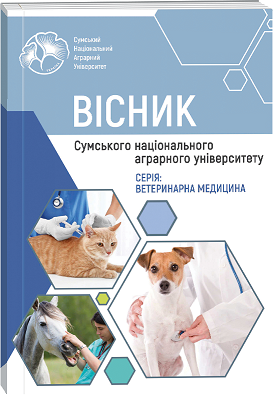OVERVIEW OF DISORDERS OF THE METABOLISM OF AMINO ACIDS AND ORGANIC ACIDS
Abstract
The main function of amino acids is a monomeric unit in protein synthesis, as well as a substrate for biosynthesis reactions. Violations of amino acid metabolism are associated with the progression of various diseases. The therapeutic effect on the metabolism of tumor cells has been shown to be effective with fewer side effects compared to some traditional treatment methods. In addition, treatments targeting essential amino acids, such as dietary methionine restriction, have been shown to extend lifespan in mice and rats. Tumors probably depend on an external supply of essential amino acids. Thus, restriction of these amino acids can inhibit tumor growth, demonstrating the importance of amino acid metabolism. In addition to its role in cancer development, amino acid metabolism is an important contributor to metabolic diseases such as diabetes and obesity, as well as cardiovascular disease, autoimmune disease, and neurological disease. Amino acids are organic compounds containing amino and carboxyl groups, which can be divided into α-, β-, γ-, and δ-amino acids, the most important of which are 22 amino acids. Alpha-amino acids, which make up proteins, and 20 of these amino acids are involved in protein synthesis. Amino acids are involved in biosynthesis, neurotic transmission and other life processes. Peptide bonds connect amino acids to form polypeptide chains, which undergo post-translational modifications and sometimes combine with other polypeptide chains to form proteins. Among the amino acids that make up proteins, nine cannot be synthesized from other compounds and must be obtained from food; they are also essential amino acids. When amino acids enter the body through food, in addition to being used for protein synthesis and other biomolecular synthesis, they can also be oxidized to urea and carbon dioxide as energy sources via oxidative pathways. The oxidation pathway begins with aminotransferase-mediated deamination and transfer of the amino group to alphaketoglutaric acid to form glutamate for entry into the urea cycle. Another product, keto acid, enters the citric acid cycle to provide energy for life.
References
2. Belits Kh.-D., Hrosh V., Shyberle P. (2009). Berlin Heidelberg, Food Chemistry. SpringerVerlag.
3. Chi Keunh, Cheunh Bkhavbkhuti, Mekhta. M. (2015) Berlin Heidelberg. Handbook of Food Chemistry. Springer-Verlag.
4. Dzhon M. de Man, Dzhon U. Finli, V. Dzheffri Kherst, Chanh Yonh Li. (2018) England. Principles of Food Chemistry. Springer, Cham.
5. Hyryna N.P., Tumanova I.V. (2012). Praktykum z neorhanichnoi khimii: Navch. navchalnyi posibnyk vyshchykh medychnykh (farmatsevtychnykh) zakladiv I-III rivniv akredytatsii. [Workshop on inorganic chemistry: Education. study guide higher medical (pharmaceutical) institutions of I-III levels of accreditation]. Kharkiv: VSV «Medytsyna». [in Ukrainian].
6. Levitin Y. Y., Antonenko O. V., Bryzytska A. M., Vedernykova O., Neorhanichna khimiia. (2012). Laboratorni praktykumy: navch. posibnyk dlia studentiv naukovykh spivrobitnykiv farmatsii akademichnoi kafedry. [Laboratory practicums: teaching. manual for students scientist pharmacy academic department]. Kharkiv: NFaU. [in Ukrainian].
7. Levitin Y.I., Bryzytska A.M., Kliuieva R.Kh.. (2017). Zahalna ta neorhanichna khimiia : navch. dlia studentiv VNZ zakryttia navchannia. [General and inorganic chemistry: textbook. for university students education closing]. Kharkiv : NFaU [in Ukrainian].
8. Muzychenko V. P., Lutsevych D. D., Yavorska L. P. (2010). Medychna khimiia. [Medicinal chemistry]. Kharkiv: VSV "Medytsyna". [in Ukrainian].
9. Sachan A., Khendrikh S.. (2018) England. Food Toxicology: Current Advances and Future Challenges. Apple Academic Press.
10. Slobodniuk R. Ye., Horalchuk A. B. (2018). Analitychna khimiia ta analiz kharchovykh produktiv: navchalnyi posibnyk. [Analytical chemistry and analysis of food products: a study guide]. Kharkiv: Vydavnychyi dim «Kondor». [in Ukrainian].
11. Stepanenko O. M., Raiter L. Kh., Ledovskykh V. M., Ivanov S. V. (2002). Zahalna ta neorhanichna khimiia: U 2-kh hl. [General and inorganic chemistry: U 2-kh ch.] Kharkiv: Ped. Presa, 2002. [in Ukrainian].
12. Tsvietkova L. B., Romaniuk O. P. (2006). Neorhanichna ta orhanichna khimiia: Navch. posibnyk. Rozdil II. [Inorganic and organic chemistry: Education. manual. Ch.II]. – Lviv: ‘Mahnoliia’. [in Ukrainian].
13. Tsvietkova L.B. (2007). Zahalna khimiia: teoriia ta problemy: Navch. posibnyk. Ch.I. [General chemistry: theory and problems: Study. manual. Ch.I]. – Lviv. [in Ukrainian].
14. Voronov S.A., Stetsyshyn Yu.B., Panchenko Yu.V., Vasyliev V.P.. (2010). Toksykolohichna khimiia kharchovykh produktiv i kosmetychnykh zasobiv : navch. [Toxicological chemistry of food products and cosmetics: textbook]. Lviv: Vydavnytstvo Lvivskoi politekhniky. [in Ukrainian].
15. Wisconsin P.C.K. Cheung, Mehta B.M.. (2015) England, Food Chemistry. Third Edition.

 ISSN
ISSN  ISSN
ISSN 



